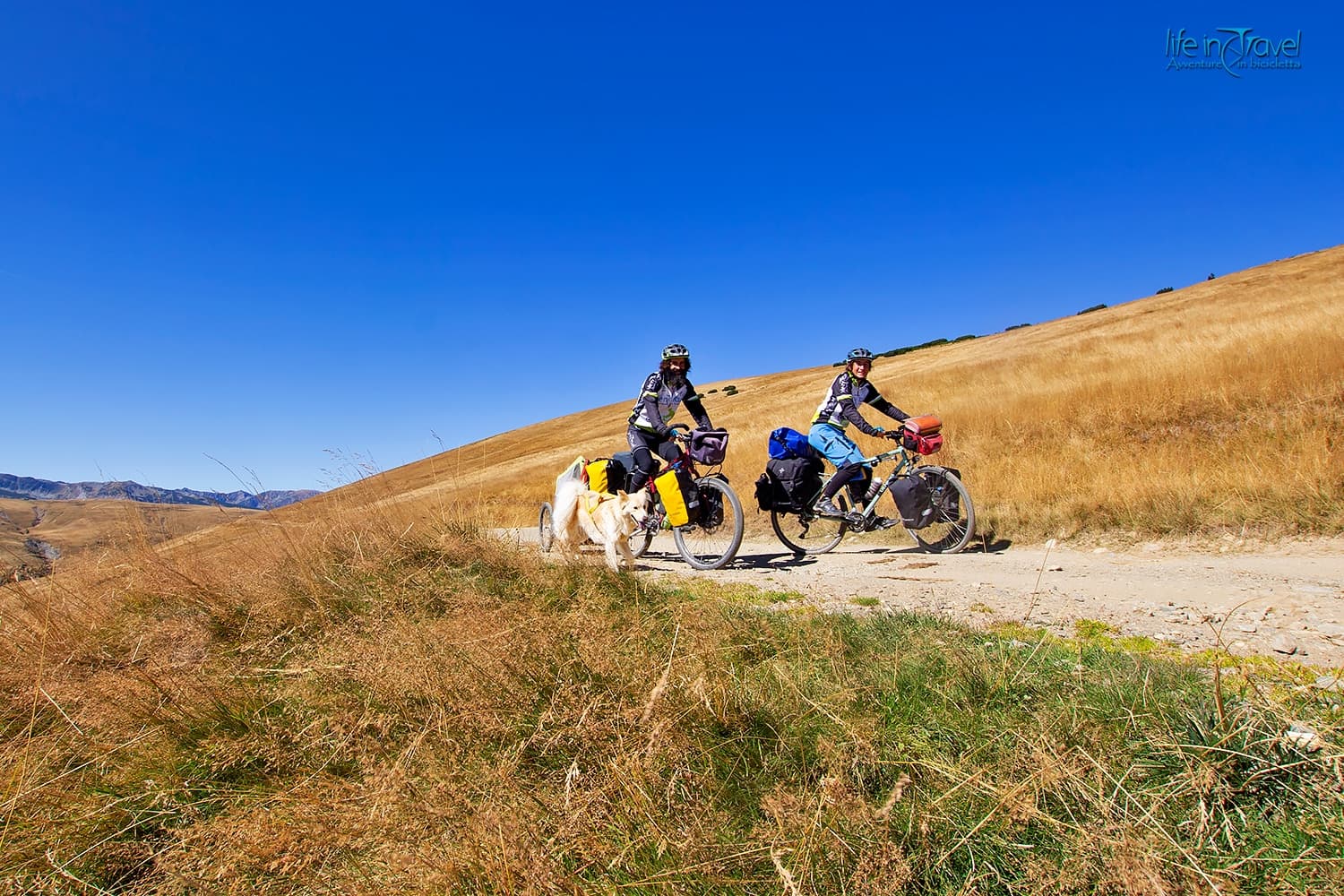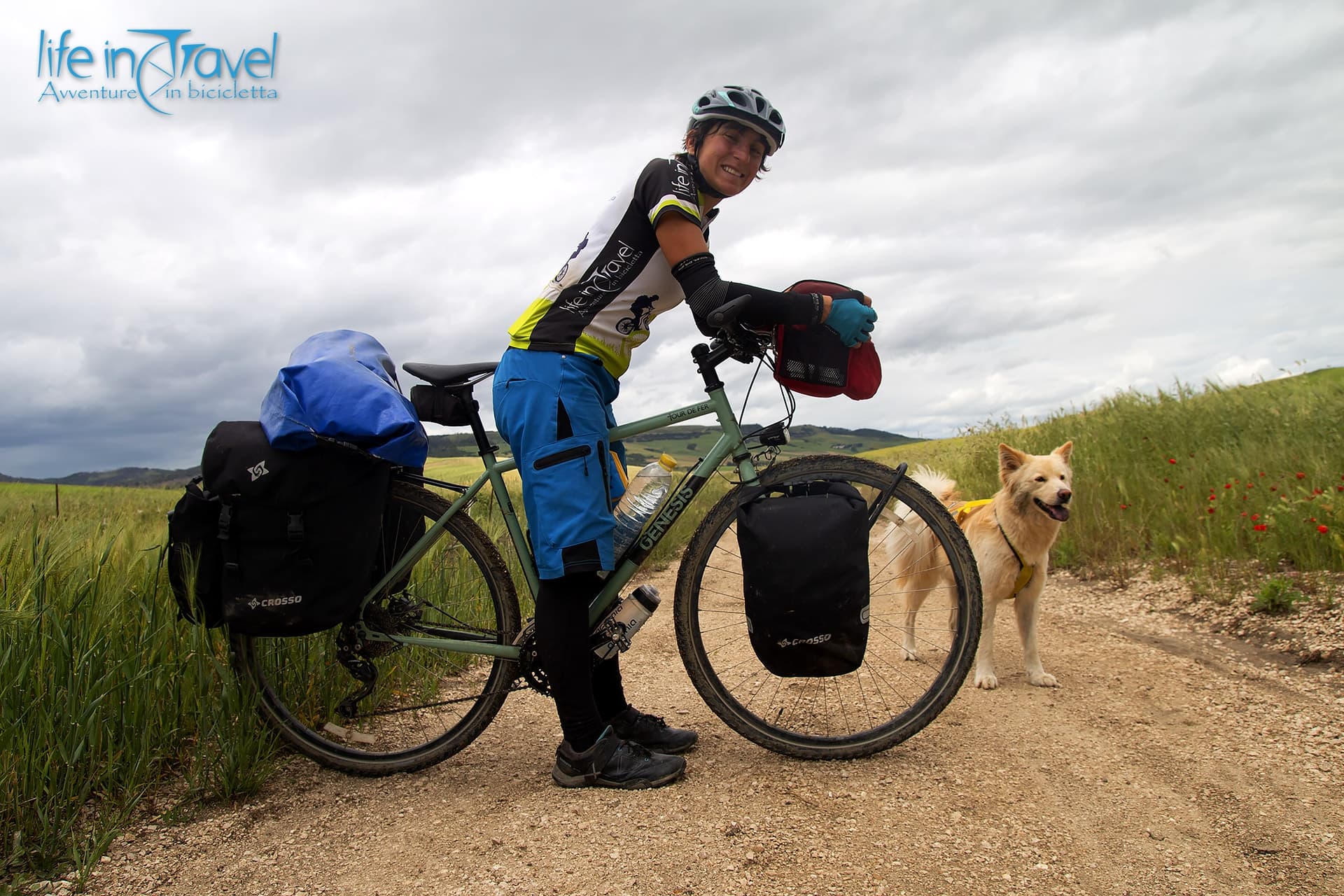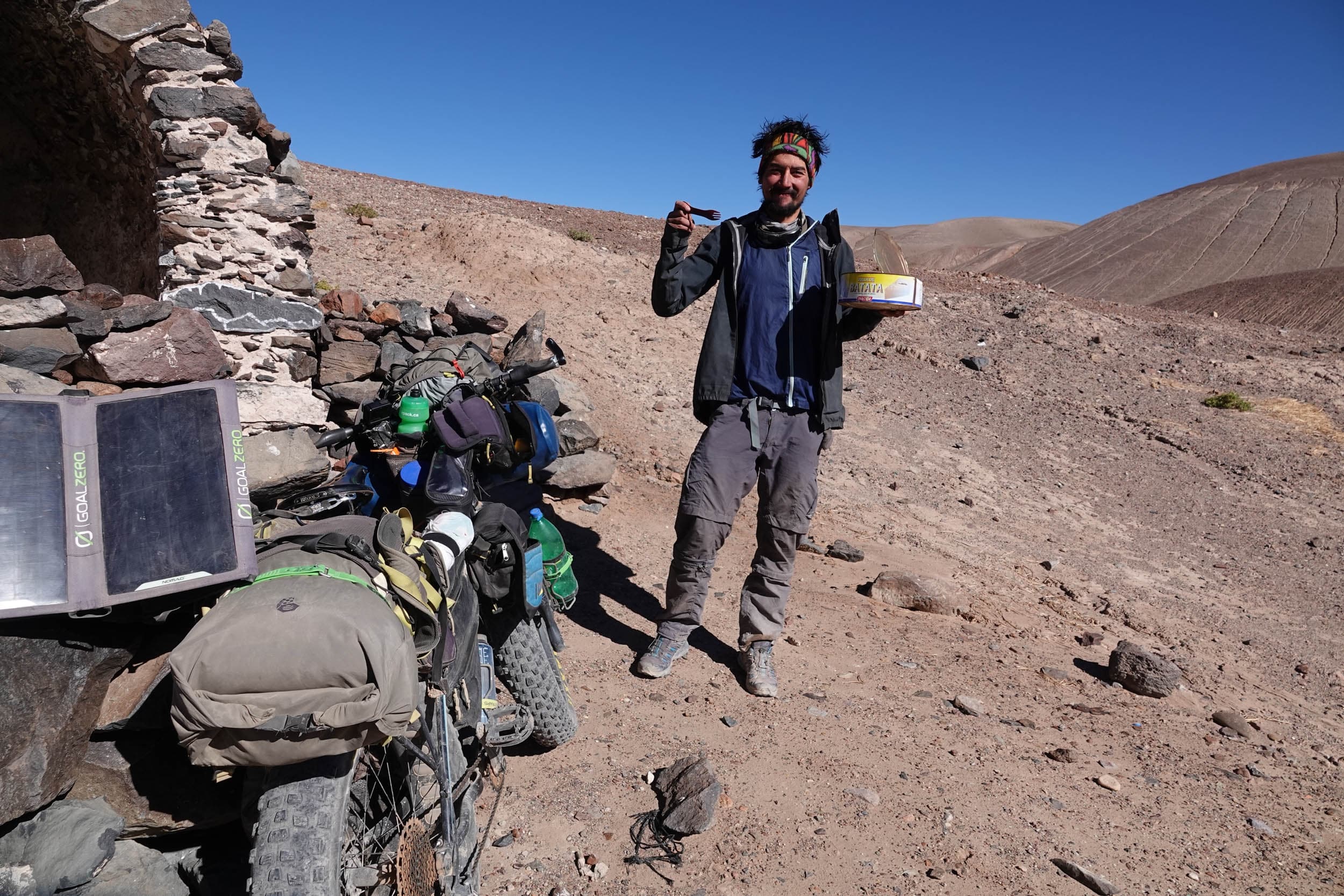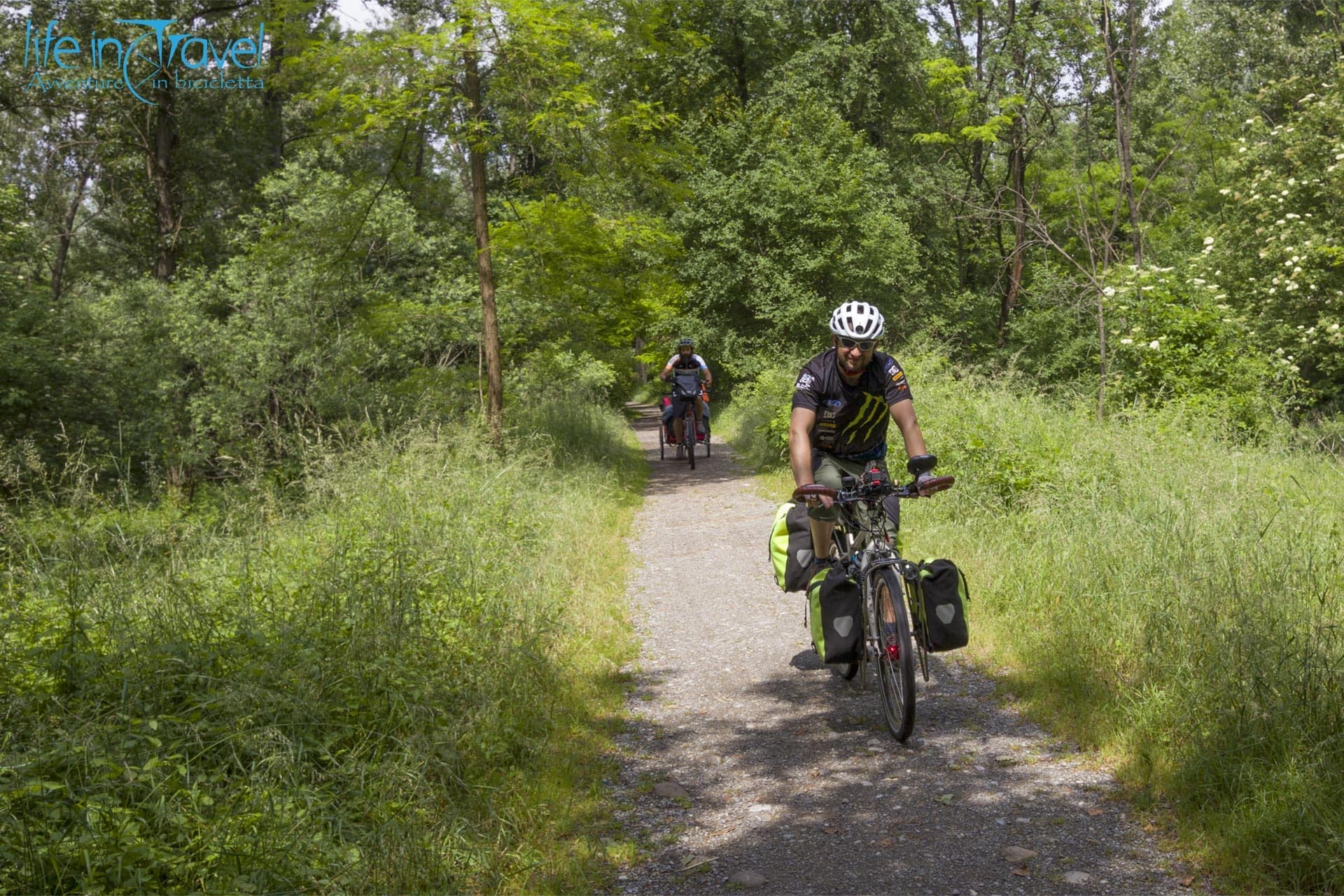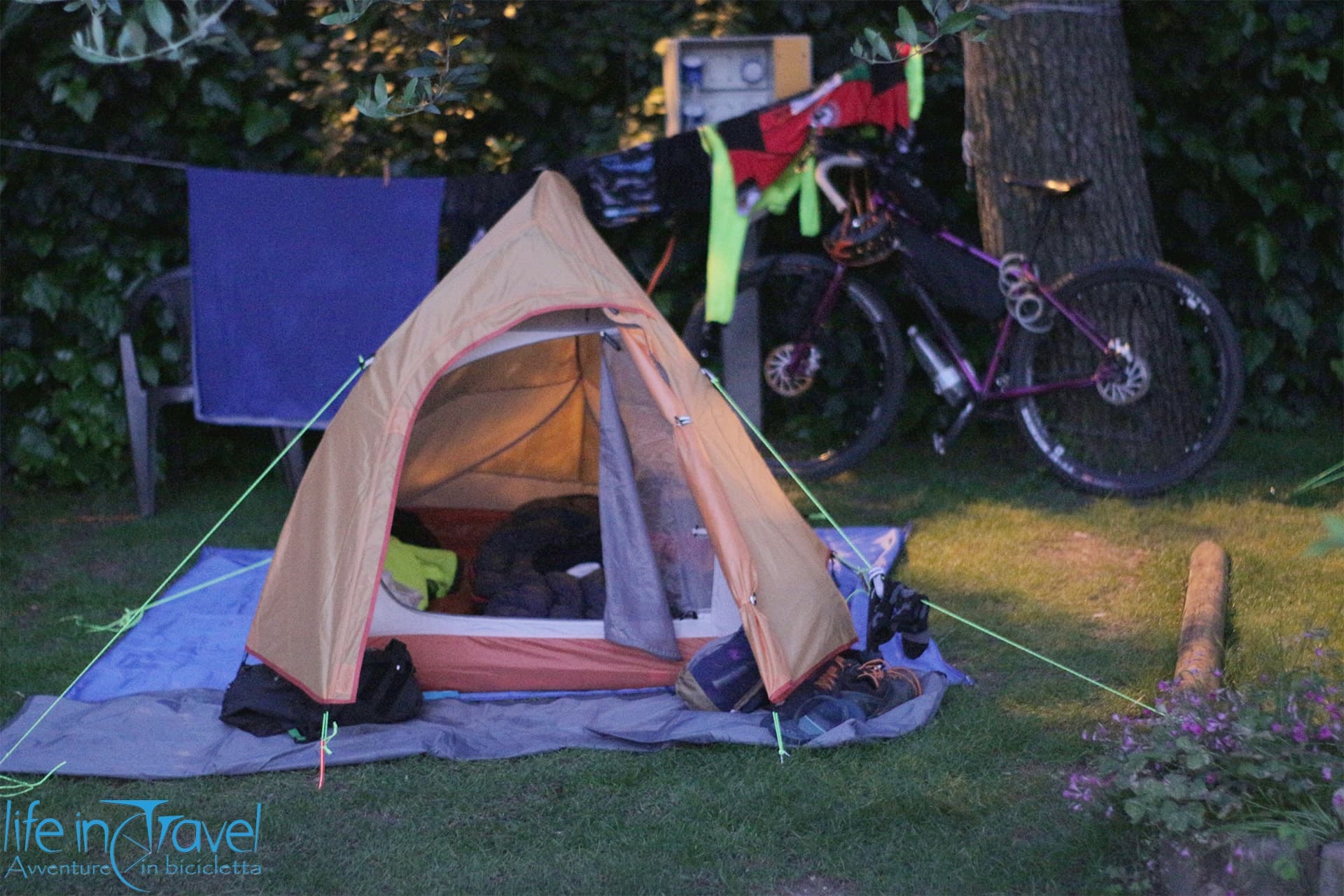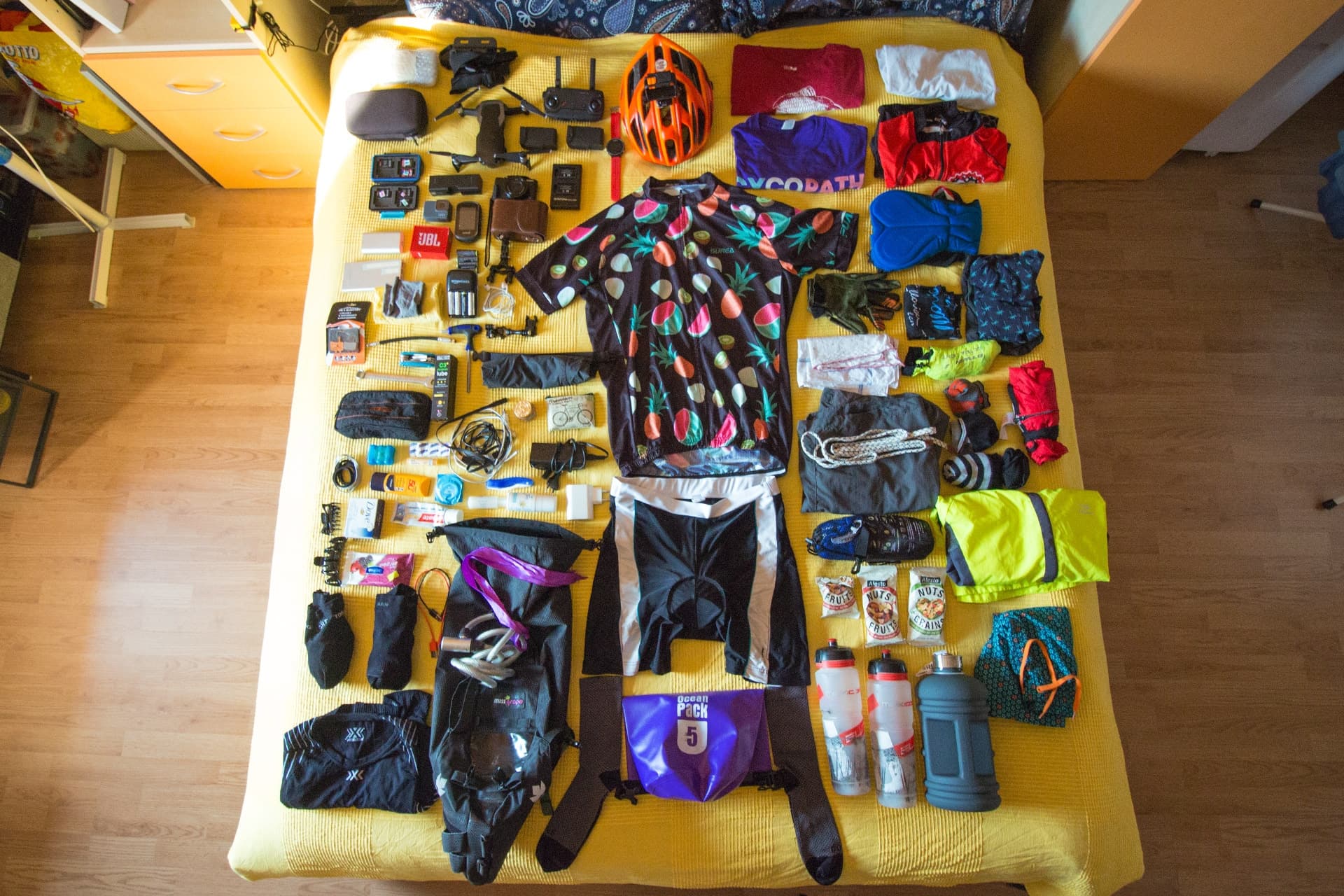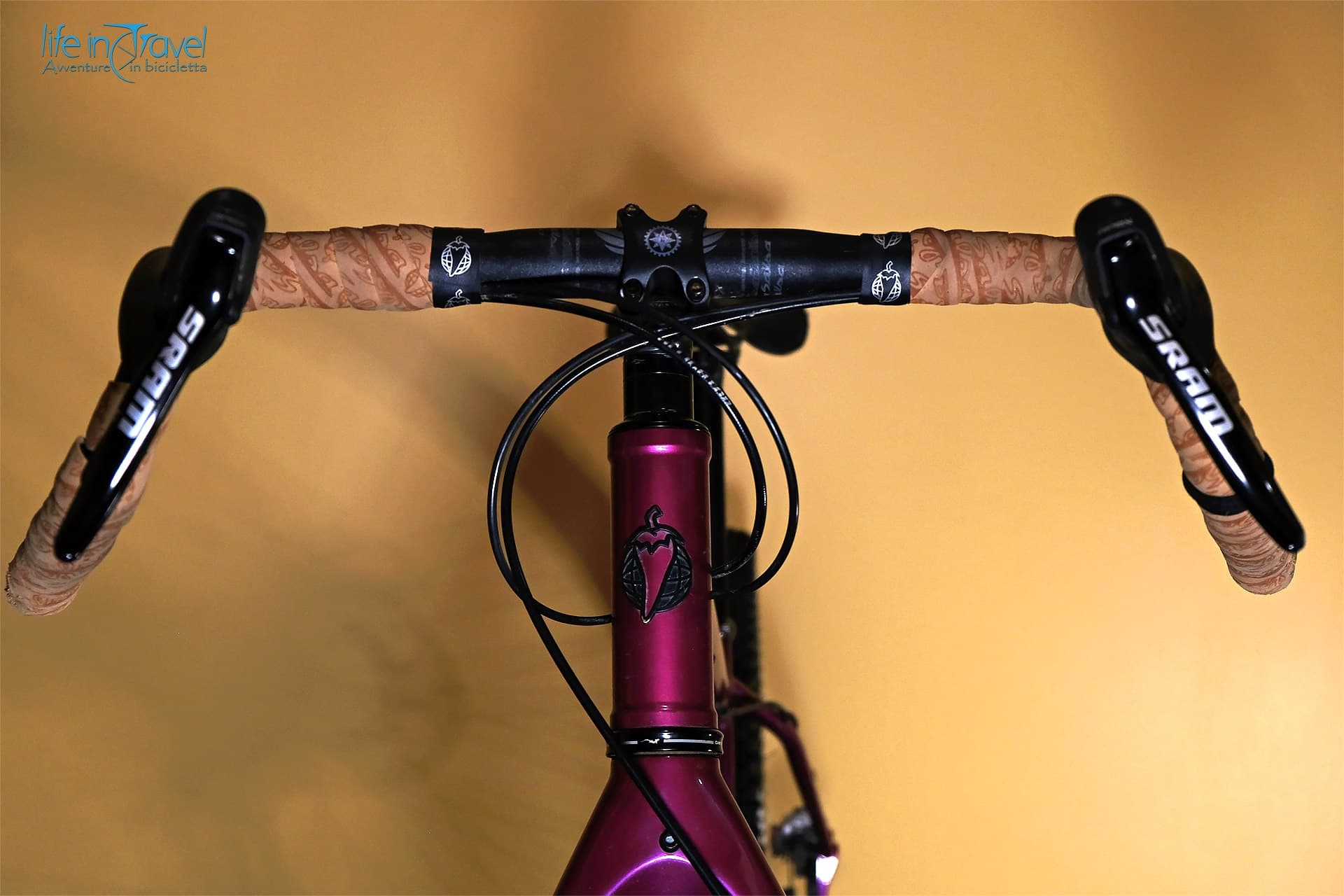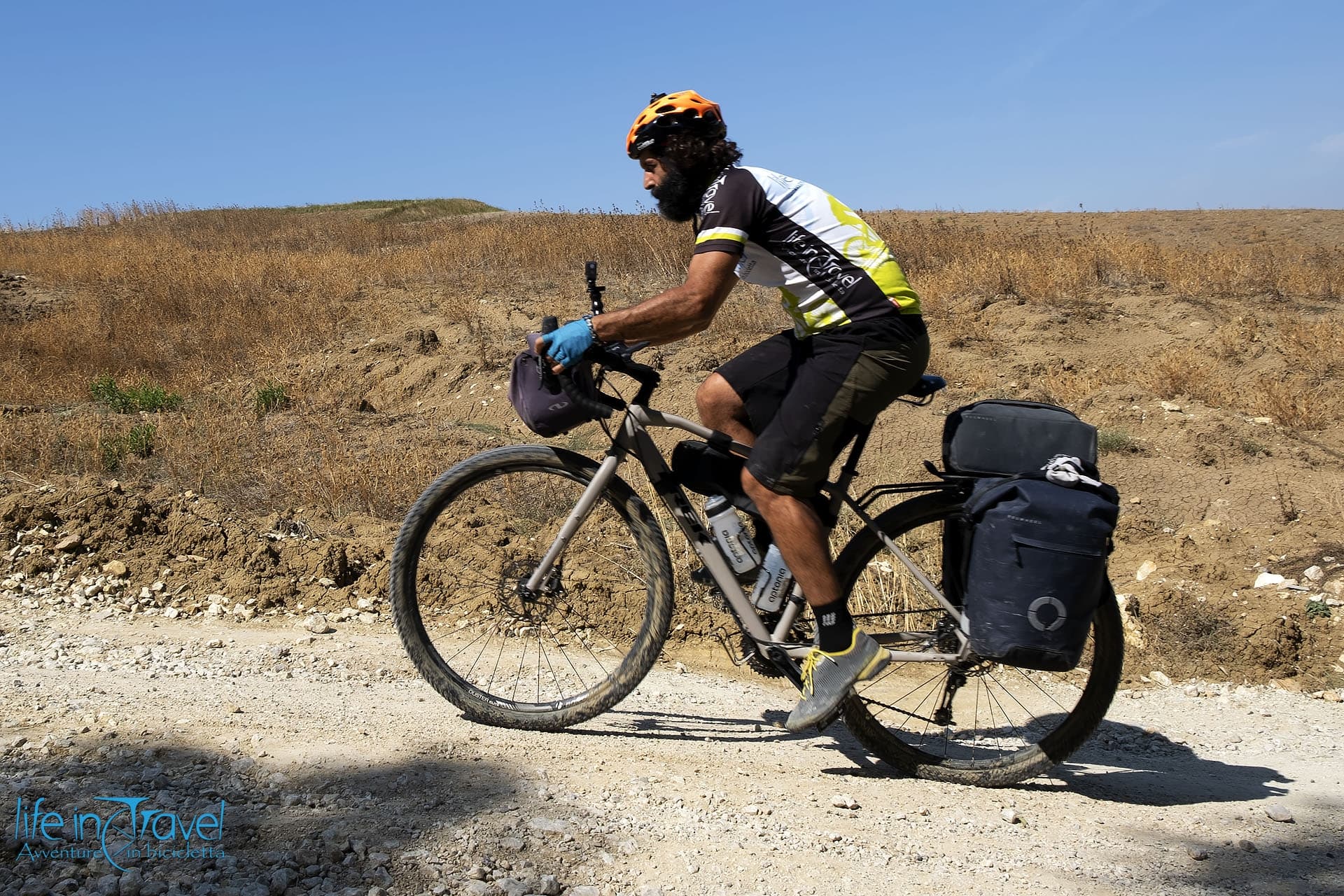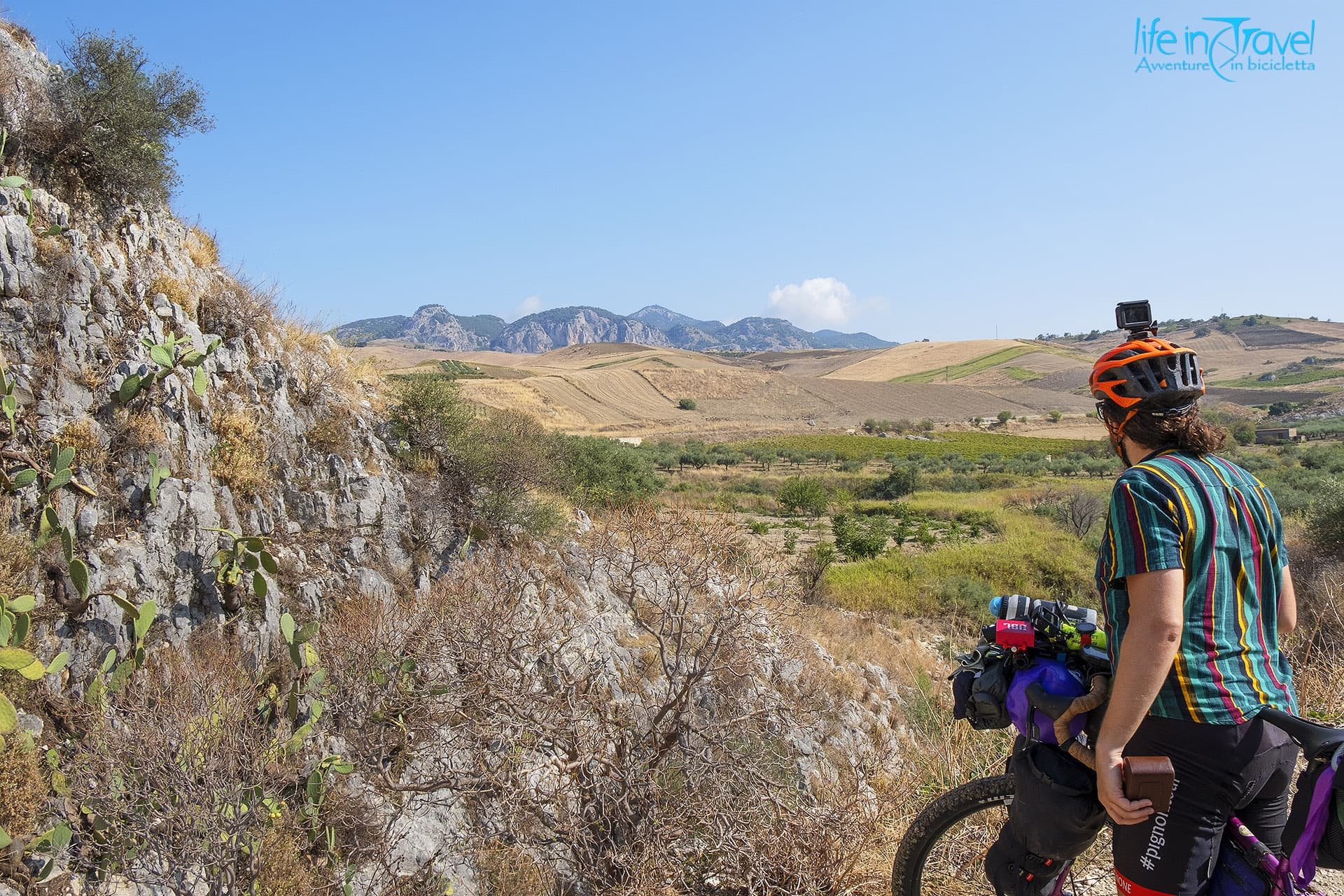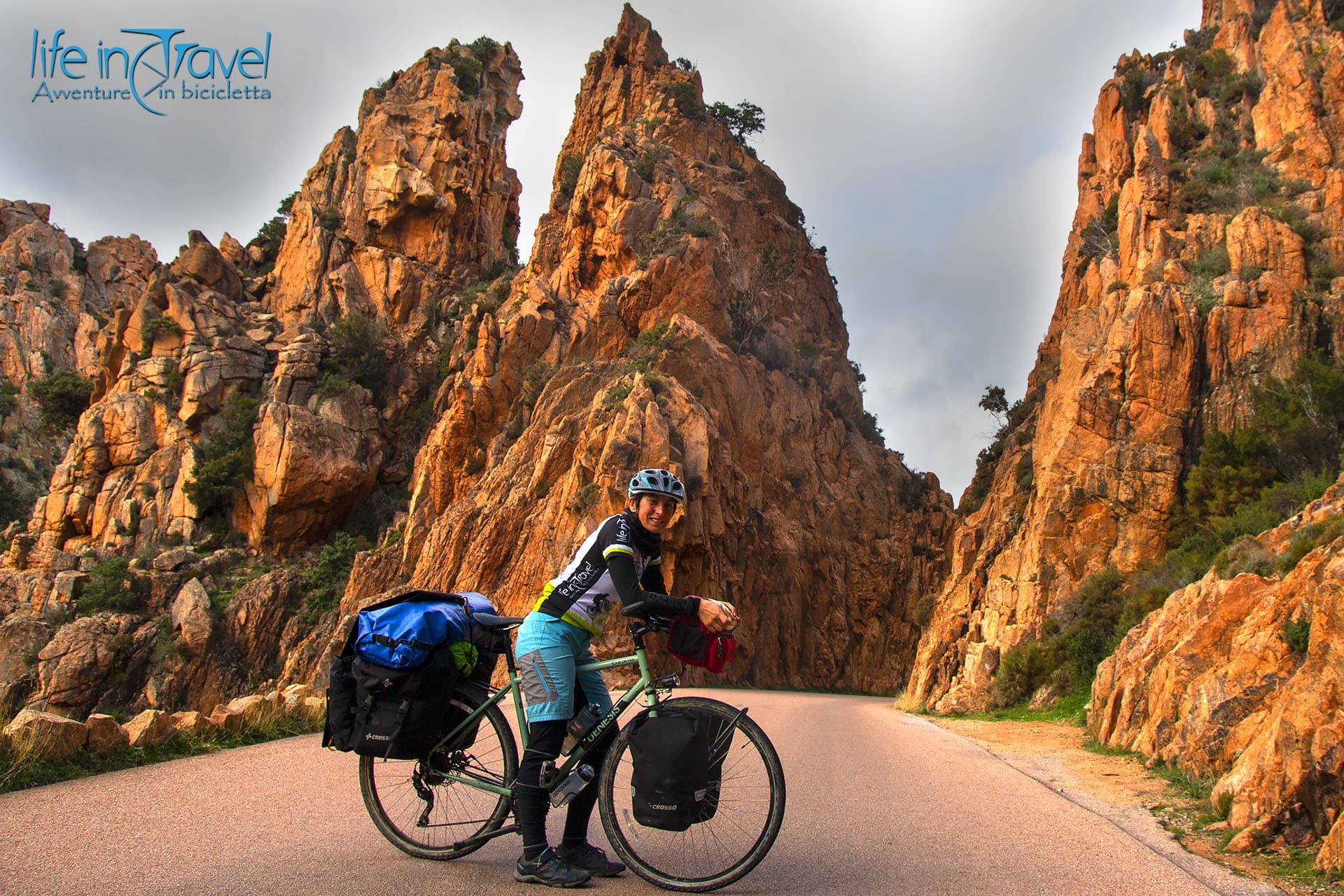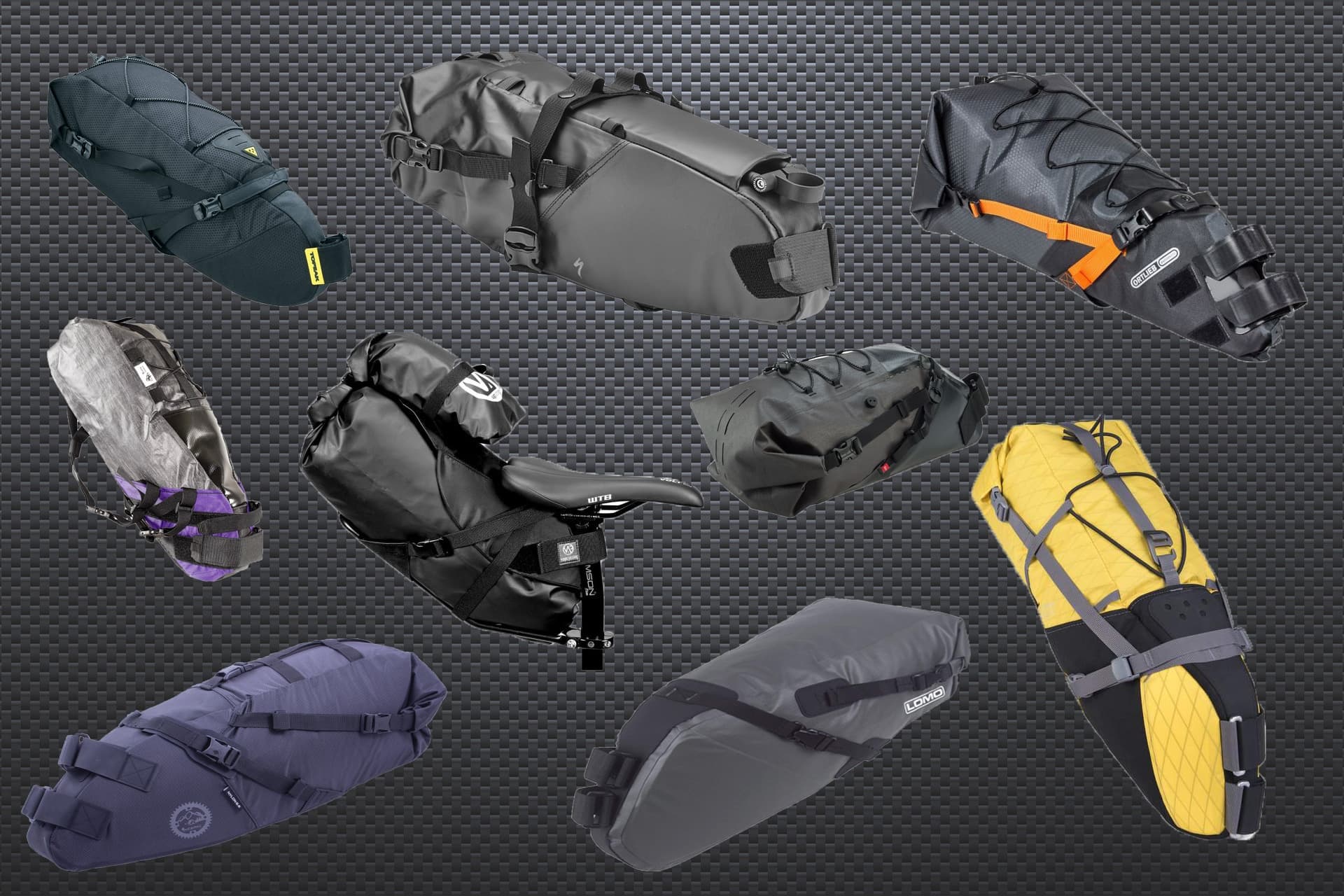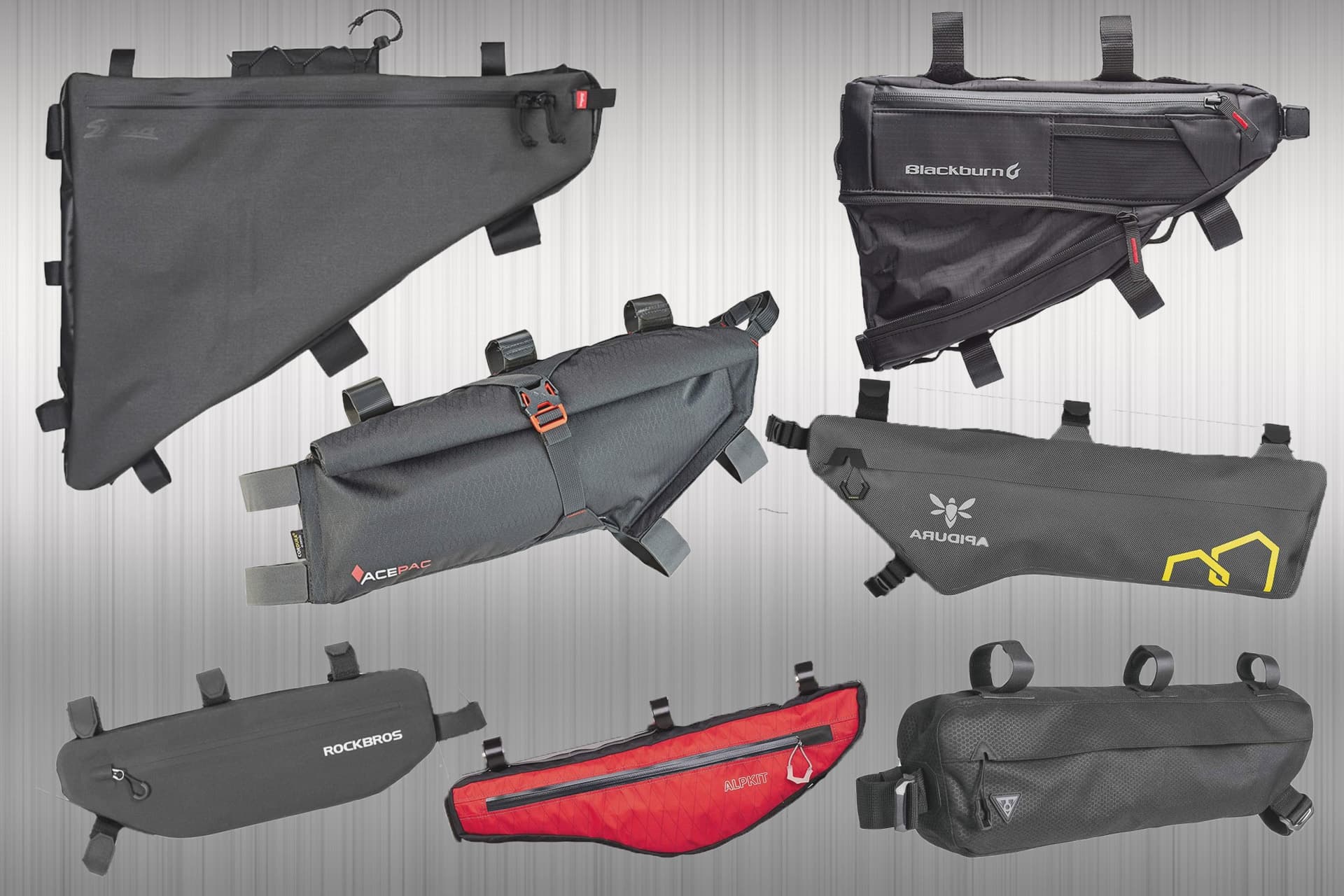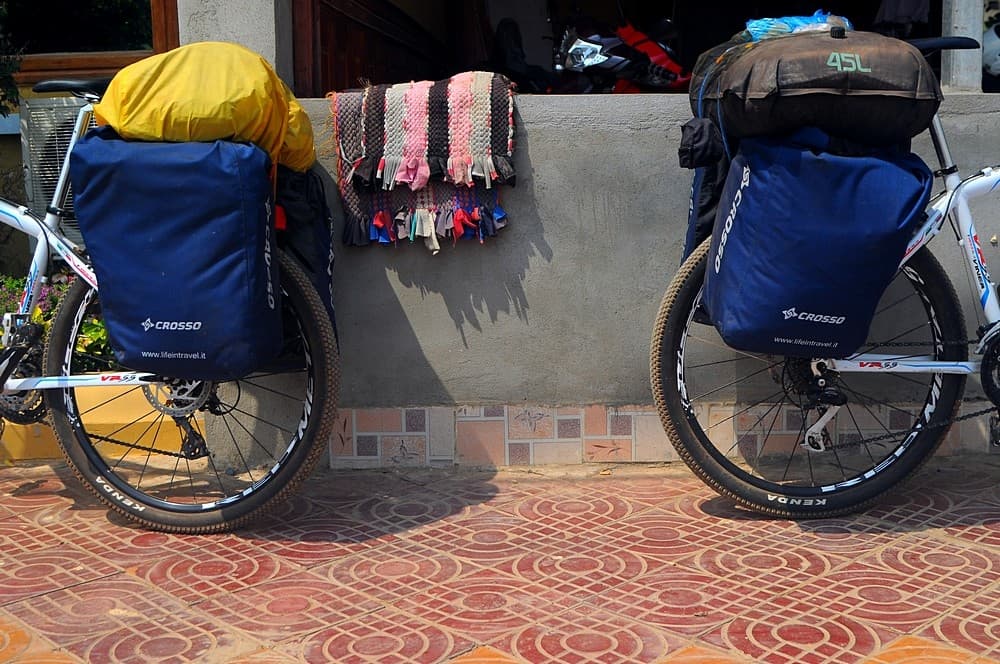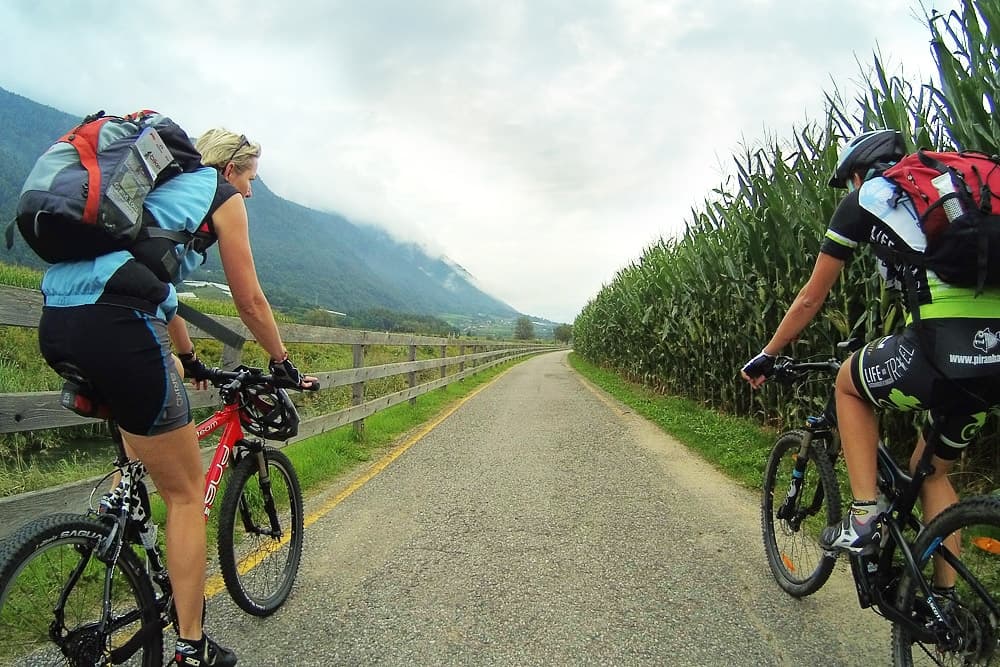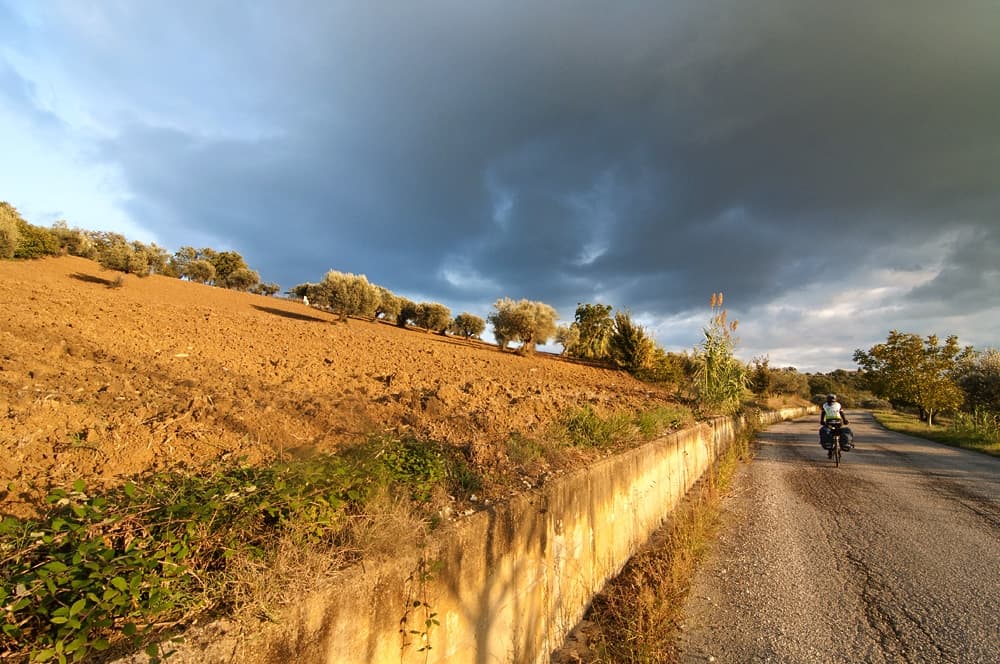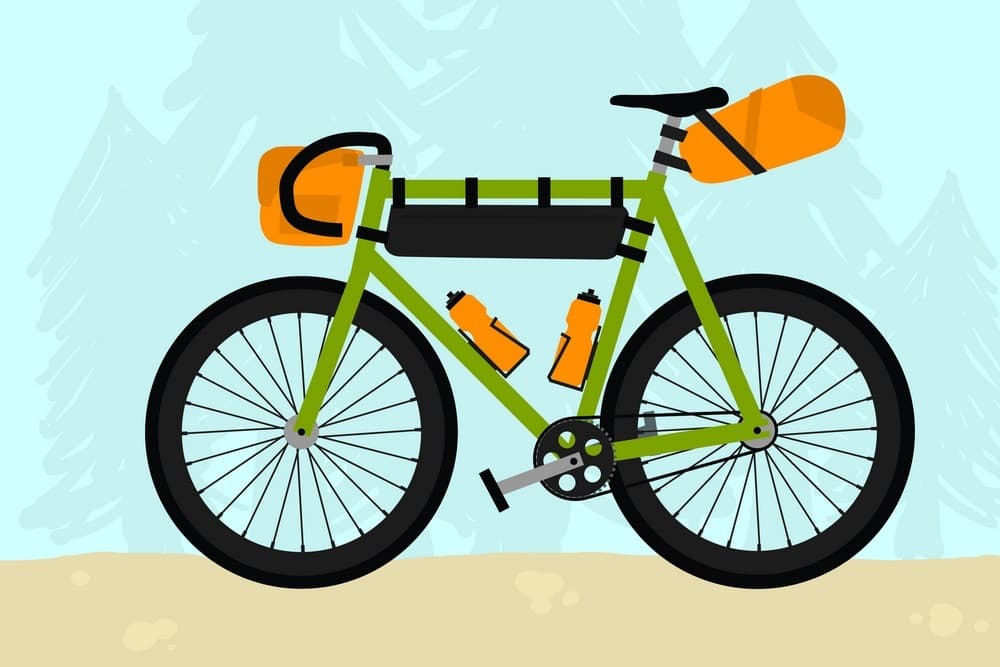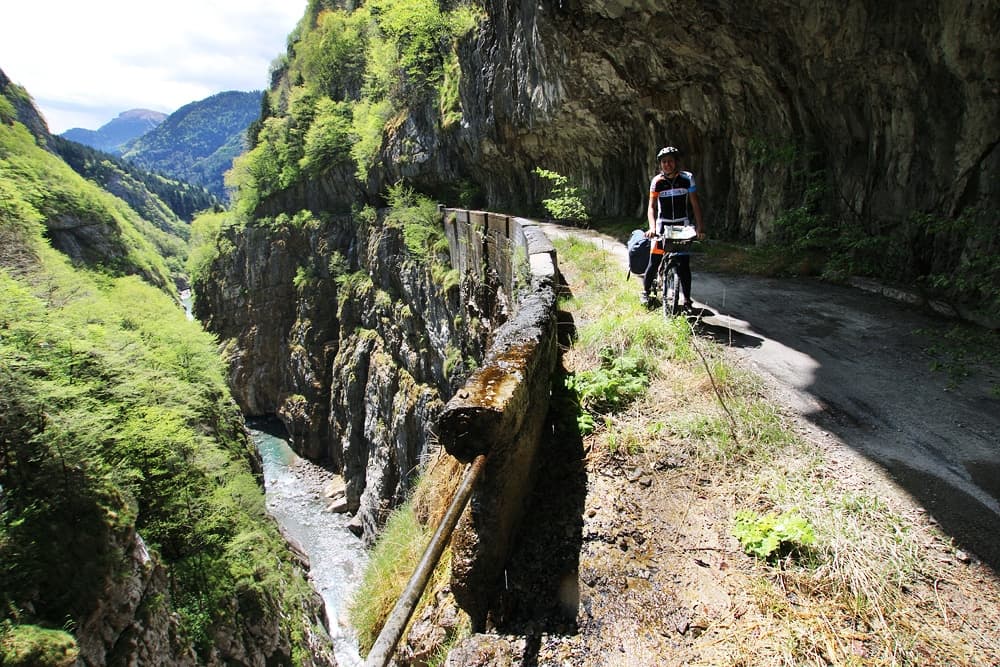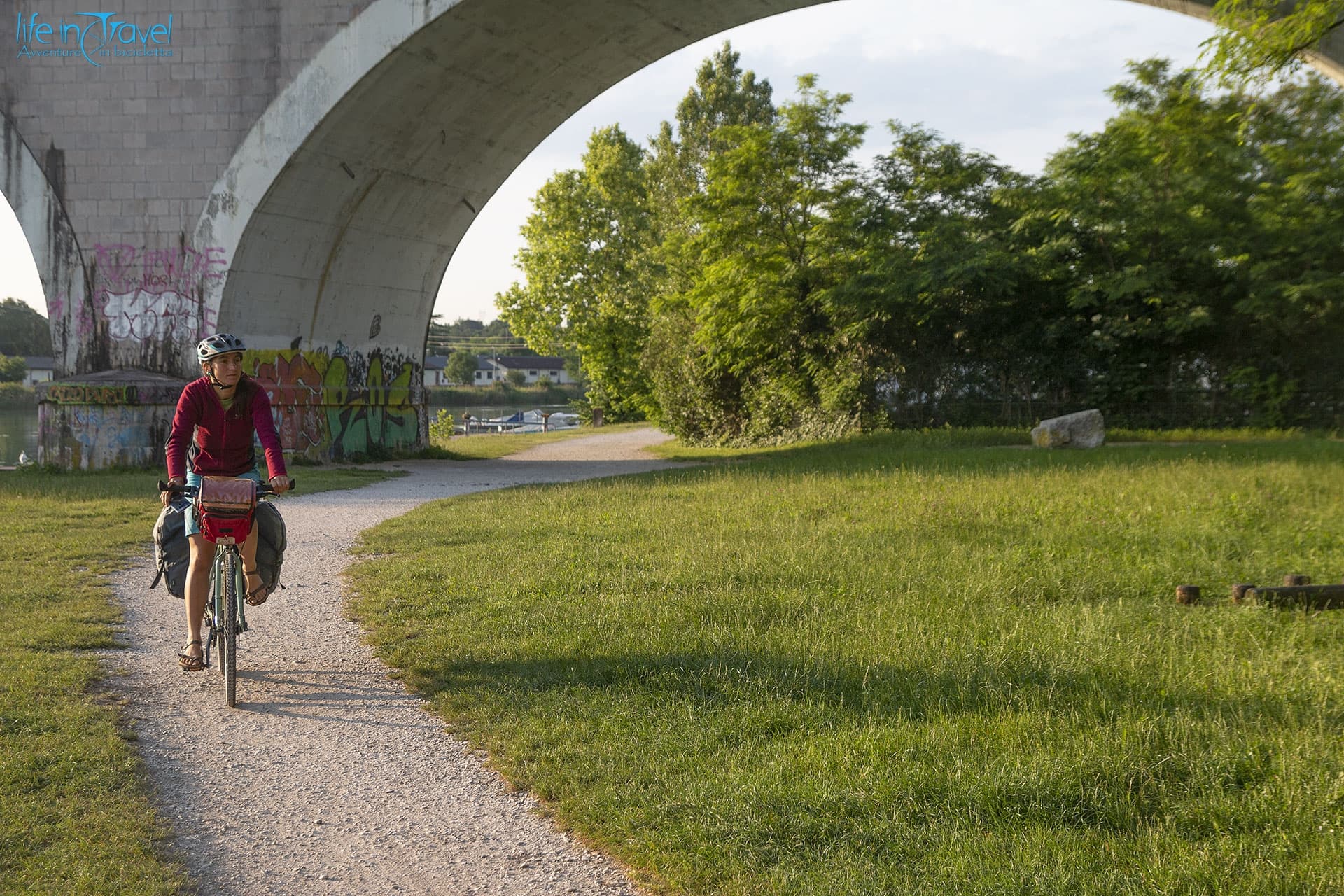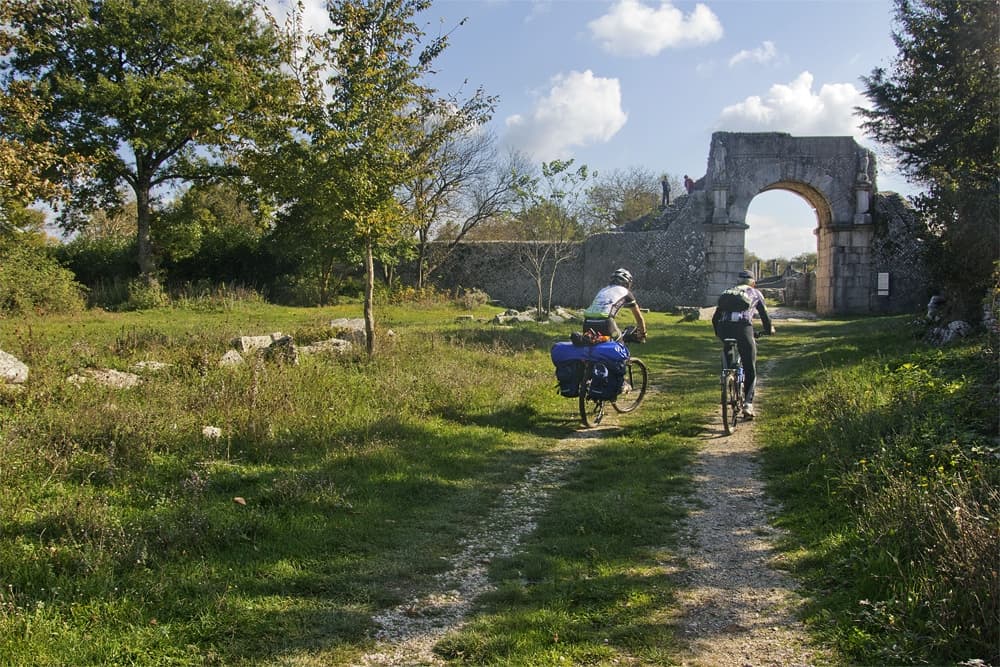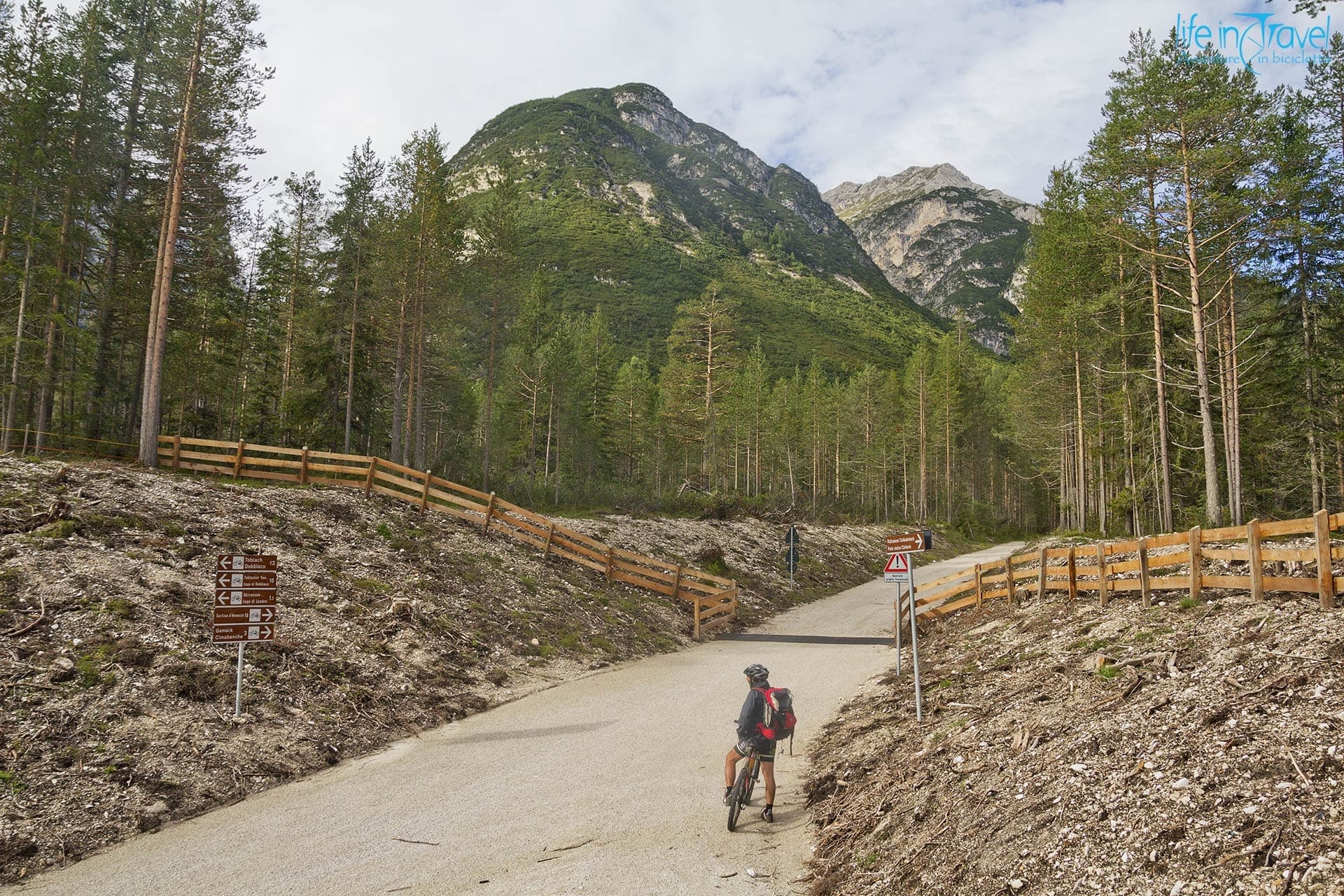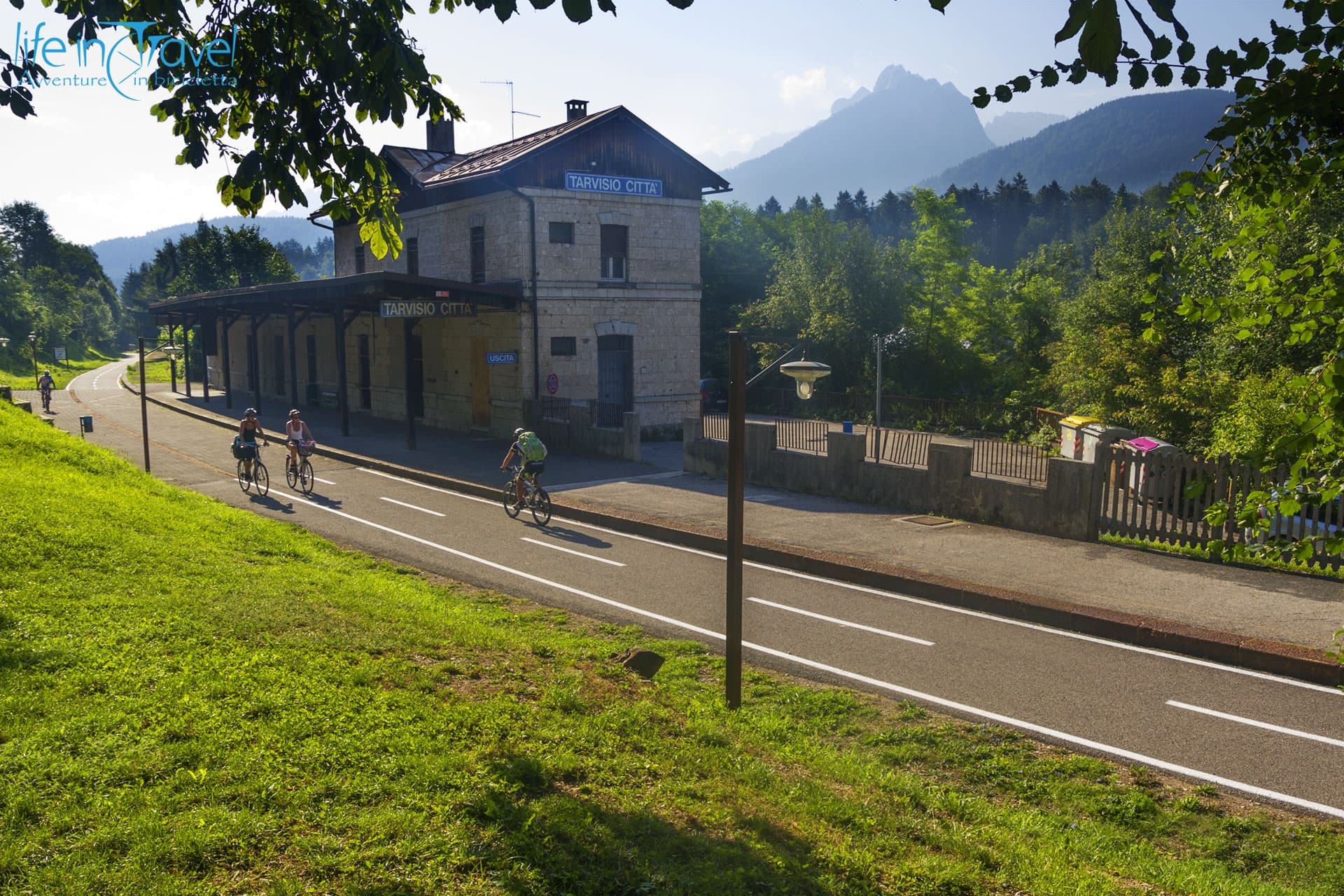One of the most interesting areas crossed during our long European bicycle journey called NPJ, No Plans Journey, is a great region of Romania, which reminds us stories of vampires, bears, and wild mountains... yes, you already figured out what I'm talking about. We crossed Transylvania by bikes, in Romania, from Brașov to Sighișoara closing a 900 km (almost) ring up and down on the Carpathian Mountains, really hard but definitely satisfying.
In this article
- Transylvania by bicycle
- Romania by bicycle in Transylvania
- Brașov and Râsnov Fortress
- Bran Castle and Făgăraș
- Transfăgărașan, Ceausescu's madness
- The bear trail amid the two passes
- Bears in Romania
- The Transalpine, on the roof of the Carpathians
- Sebes and Sibiu
- Mediaș, its fortified churches, and Sighisoara
- Coming back to Brasov


Brașov and Râsnov Fortress
Brașov is the starting point of our itinerary and one of the main cities in Romania. Pleasantly laying down at the foot of the Eastern Carpathians, its center is lively and nice to visit. Like many cities in Transylvania, it has a typically German soul, left by the domination of the Saxons which settled here from the XI century. The city UNESCO heritage, once enclosed by great walls surveilled by high towers, has today two of the main doors and the main square (Piața Sfatului) with the beautiful Black Church, one of the most majestic Gothic churches of Eastern Europe.
Pleasantly laying down at the foot of the Eastern Carpathians, its center is lively and nice to visit. Like many cities in Transylvania, it has a typically German soul, left by the domination of the Saxons which settled here from the XI century. The city UNESCO heritage, once enclosed by great walls surveilled by high towers, has today two of the main doors and the main square (Piața Sfatului) with the beautiful Black Church, one of the most majestic Gothic churches of Eastern Europe.

Let's cut the cackle... after visiting Brașov, you'll only have to take your bike and start this adventure in the Carpathians and be ready to cross Transylvania by bicycle and its wonderful mountains.
...and if adventure should be, let it be from the very beginning! Just outside of the city, take the road towards Poiana Brașov, a neighborhood and one of the most known ski places in all Romania, connected to the city with a funicular. The road goes up to 1000 m altitude, but the ascent is sweet and easy to ride. If you are longing offroad areas, don't worry: it's already time to leave the asphalt. A quick turn towards West will allow you to avoid the chaos of Poiana Brasov, immersing in the green conifer woods which here already dominate the horizon. The forestal road is well kept and very fun.
The road goes up to 1000 m altitude, but the ascent is sweet and easy to ride. If you are longing offroad areas, don't worry: it's already time to leave the asphalt. A quick turn towards West will allow you to avoid the chaos of Poiana Brasov, immersing in the green conifer woods which here already dominate the horizon. The forestal road is well kept and very fun.
 In a quick up and downhill, you'll be back on the road towards Râsnov and a steep downhill in the wood will lead you to the fortress. Don't miss the visit to the fortified city, even if a hard ramp will be a good challenge.
In a quick up and downhill, you'll be back on the road towards Râsnov and a steep downhill in the wood will lead you to the fortress. Don't miss the visit to the fortified city, even if a hard ramp will be a good challenge.
Bran Castle and Făgăraș
Back on your feet, pass by the city below the fortress of Râsnov, to then reach the wide valley towards Bran.  Unfortunately, in order to reach one of the most famous castles in Europe, you'll have to ride on the DN73, a pretty busy road. You can avoid it on some legs on the secondary countryside roads. But why until Bran? The reason is easy: passing through Transylvania and not visit this castle is like going to Pisa and miss Piazza dei Miracoli.
Unfortunately, in order to reach one of the most famous castles in Europe, you'll have to ride on the DN73, a pretty busy road. You can avoid it on some legs on the secondary countryside roads. But why until Bran? The reason is easy: passing through Transylvania and not visit this castle is like going to Pisa and miss Piazza dei Miracoli.
The Castle of Bran, national monument, stands on the border between Transylvania and Wallachia. Built on a rocky formation where the valley narrows, it was the last defensive post against the Ottomans' invasions. Its fame was then due to Vlad Ţepeş, Voivode (prince) of Wallachia, who lived here for some years of his life. Vlad, also known as "The Impaler", is for sure more famous for his patronymic Dracula, famed by Bram Stoker's novel, inspired by this historic controversial and bloody character. The castle, built by the Saxons, deserves a visit mostly for its position over the valley. 

Once left Bran, often under siege by tourists, you can head towards Zarnesti, riding on green hills among beautiful wooden houses. Some easy up and downhill will lead you to this beautiful village at the foot of the Marului Mountains. From Zarnesti you enter in a gorgeous valley cutting this low rocky group towards North-West. Colorful woods and little traffic accompany the ride: here we meet father and son from Germany riding through Romania by bicycle West to East. Firstly the son, quick and focused on the saddle, and after a while, happier and more cheerful, his father. Back to the flat, we keep exploring Transylvania by bicycle, riding fast towards Făgăraș, a city with a deserted - but still open - camping.
The following day, we visit the fortress: built in the XIV century, it has been then converted into a fortified castle in the XVI century, while today it hosts a museum. One of the towers presents an exhibition dedicated to torture instruments, while in the greater wing of the castle it is possible to walk through some of the manner's rooms.
Transfăgărașan, Ceausescu's madness
With our steel horse we keep riding, leaving Făgăraș towards West, on secondary roads partially asphalted and gravel, and getting closer to the Carpathians. Victoria doesn't offer too much, while the potatoes fields next to the road are packed with farmers working on the harvesting.

Cârtișoara is the access door to the madness. The road begins getting towards the mountains following the river which gave the name to the city. Initially, the Transfăgărașan goes up gently, but soon enough you're into the woods and the gradients increase abruptly. You ride uphill into this mystery setting, knowing that this itinerary, now visited by thousands of tourists, was realized for military reasons by the dictator Ceausescu after the invasion of Czechoslovakia in '68.  The first of a long series of hairpin turns grasped to the rocks leads us away from the river and the valley gets narrower and narrower. After some tunnels, we reach the group of houses at the feet of the waterfall Balea: it's the last possibility to refill our bottles and have something to eat before the pass, so if you're weary, take advantage of this place, maybe with a lángos!
The first of a long series of hairpin turns grasped to the rocks leads us away from the river and the valley gets narrower and narrower. After some tunnels, we reach the group of houses at the feet of the waterfall Balea: it's the last possibility to refill our bottles and have something to eat before the pass, so if you're weary, take advantage of this place, maybe with a lángos!
The road goes uphill for two more hairpin turns, before opening to the scenic amphitheater of the Făgăraș mountains. The sky gets darker the more we climb, but the view is majestic, besides the cableway and the high tension trellis. A short plain is a perfect illusion, but in front of us, the rocky and grassland wall does not give space to the imagination: this big 400 m "stairway" must be overpassed. 
 We are saved by the hairpin turns, which alleviate our suffering and the high gradients. The more we climb, the more we are out of breath and our legs get stiffer, but our soul is lighter and the asphalt snake seems tamed. Lake Balea is the perfect setting to celebrate this challenge, despite the chaos at the pass. The joy is overwhelming.
We are saved by the hairpin turns, which alleviate our suffering and the high gradients. The more we climb, the more we are out of breath and our legs get stiffer, but our soul is lighter and the asphalt snake seems tamed. Lake Balea is the perfect setting to celebrate this challenge, despite the chaos at the pass. The joy is overwhelming.
After some cheese lángos, we have to enter the tunnel marking the passage from Northern to Southern Western Carpathians. Chaos gives space to silence, it seems we have been launched on another hemisphere: no trellis, no cars, no smartphone snapping pictures all the time. The northern part of this road is busier and touristic, while the true essence of these mountains can be savored on the southern side. The downhill brings us back to normal temperatures, while we keep following a river, this time the Capra.  Broadleaved woods, beaten at high altitude by pastures and conifers, gain back some land and space while going down. We are back in the realm of the bears, frequently spotted in these areas. The downhill stops at 1000m altitude and we reach the lakeside of Lake Vidraru.
Broadleaved woods, beaten at high altitude by pastures and conifers, gain back some land and space while going down. We are back in the realm of the bears, frequently spotted in these areas. The downhill stops at 1000m altitude and we reach the lakeside of Lake Vidraru. The traffic isn't excessive, but in order to stay out of it just follow the forestal road next to the lake on the western side, where you can find an optimal solution for the night: camping Cumpana, even if due to the presence of bears it's not allowed to place the tent (there is also a restaurant and the typical "casute").
The traffic isn't excessive, but in order to stay out of it just follow the forestal road next to the lake on the western side, where you can find an optimal solution for the night: camping Cumpana, even if due to the presence of bears it's not allowed to place the tent (there is also a restaurant and the typical "casute").

The bear trail amid the two passes
In the morning, the beech trees getting yellow give us a mystic setting: after all the tales of the everyday casual meetings on the road and many signs alerting us, we are waiting for a bear to show up just in front of us.  Nothing. We keep riding alongside the lake until its very end and before getting again on the asphalt, we climb up in the heart of Western Carpathians on a well-trod soil road. At the beginning, the gradients make us hobble, then the road goes up and down docile and majestic. The loud silence of the woods leads us. A plain anticipates the umpteenth river cutting the mountains. The last ramp leads us to the top of this pass, before the nosedive towards Salatrucu, which tests our mechanic brakes' power.
Nothing. We keep riding alongside the lake until its very end and before getting again on the asphalt, we climb up in the heart of Western Carpathians on a well-trod soil road. At the beginning, the gradients make us hobble, then the road goes up and down docile and majestic. The loud silence of the woods leads us. A plain anticipates the umpteenth river cutting the mountains. The last ramp leads us to the top of this pass, before the nosedive towards Salatrucu, which tests our mechanic brakes' power. 

No bears, even if their traces are everywhere: trees scratched, trails dug, and giant footprints testimony of a recent passage... we keep riding on asphalt for a while to the South, but as we have the opportunity, we look for the West. Once again, the road is unforgiving: gradients up to 10% on the first hill, and when the elevation gain stops for a while, the gravel replaces the asphalt. Everywhere, even in these remote villages in the mountains, you can find some emigrants who came back after a working experience in Italy: some advice and a chat alleviate this challenge.
Once again, the road is unforgiving: gradients up to 10% on the first hill, and when the elevation gain stops for a while, the gravel replaces the asphalt. Everywhere, even in these remote villages in the mountains, you can find some emigrants who came back after a working experience in Italy: some advice and a chat alleviate this challenge.
Calimanesti is just there, after the descent at the beginning difficult, then busy. We reach the camping in Turnu 4 km from the village, managed by the monks of the nearby Monastery: it's pure madness, with trucks and cars running at full speed on the right orographic side of the river... but it's necessary to get to the left side to avoid all this, into some quieter roads! 
Fortunately, the day after, in the narrow canyon formed by the river Olt you can follow, with some ability to adapt, the trail on the left orographic side of this valley, passing by the Monastery. We have to overcome a landslide as well, before finding a beautiful track on a former railway, running parallel to the new one.
 The final tunnel is a jewel, leading to the station of Brezoi. The train manager will help you decide when to face the 500 m of rails without meeting any train: there are no alternatives to this, you'll have to ride on the rails, passing a short tunnel and getting on a parallel road. Fortunately, there is a train passing every 2 or 3 hours!
The final tunnel is a jewel, leading to the station of Brezoi. The train manager will help you decide when to face the 500 m of rails without meeting any train: there are no alternatives to this, you'll have to ride on the rails, passing a short tunnel and getting on a parallel road. Fortunately, there is a train passing every 2 or 3 hours!

Just after the rails, Tiberius reaches us, inviting us for a coffee. When we leave, I notice that I broke my rear derailleur, most probably on the rails. Once again we are lucky: our host helps us, getting us a steel piece, and with all the necessary tools makes a derailleur shaped piece, he makes a hole in the broken one and applies the new plaque on it. It is definitely unconventional, but it works and our Transalpine is still on the plan!

We continue our itinerary bicycle touring in Romania of Transylvania towards West, in the valley which slowly climbs from Brezoi to Voineasa. Climbing from the Strategic would be our first option, but a group of bikers coming down from it advises against it with trailer and panniers, due to the gradients and the type of terrain. We choose to follow their advice and face the Transalpine on the northern side.
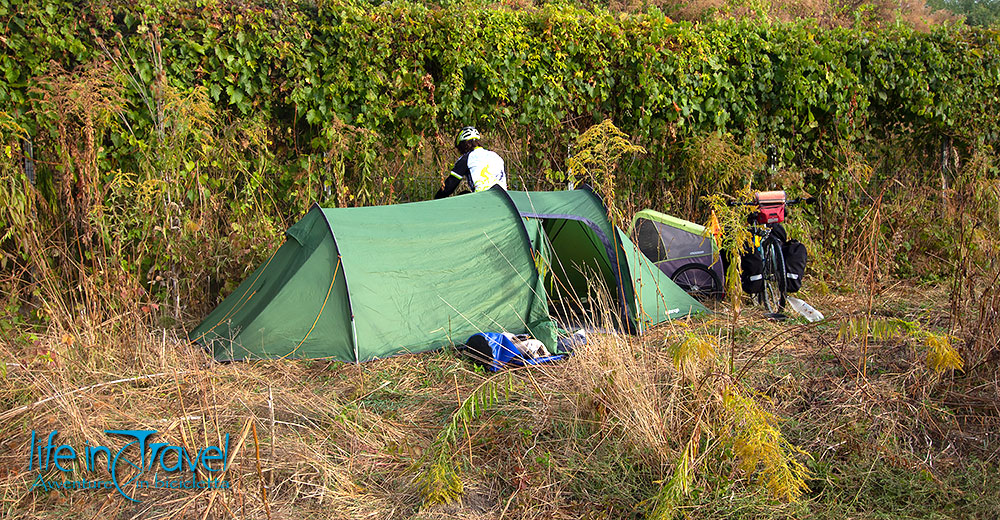
Bears in Romania
The brown bear is one of the largest terrestrial carnivores on Earth (the largest specimens contend this primacy with the polar bear!). At one time the bear populated a very wide range, whereas today, especially in our european continent, it is present only in areas that are not very extensive except for the Romanian population. The bears in Romania are almost 6000, the absolute highest number in Europe, and populate the mountainous territories belonging to the Carpathian chain. From Brasov and from other locations in Transylvania it is possible to participate in guided tours to spot these mammals in their natural habitat. Usually one goes to a sighting shelter in areas where rangers left unattended carcasses or foodstuffs. The wait can be in vain, but in most cases you can see some animals, especially foxes and bears. In Romania for several years the hunt for this large mammal is fortunately banned, but in the future it could be allowed again. The bear is among the 1200 animal and plant species protected by the European Union with only 25,000 specimens on the whole continental territory.
The Transalpine, on the roof of the Carpathians
After a night in Voineașa, it gets real. The road rears up reaching 1600m before going down to Lake Vidra.  Getting closer to the highest road of the Carpathians is slow and windy, but it's worth giving a little effort and time. We take it slow and reach Obârsia Lotrului, an outpost with some hosting facilities, a square with some stands and not much more, where we stop for the night.
Getting closer to the highest road of the Carpathians is slow and windy, but it's worth giving a little effort and time. We take it slow and reach Obârsia Lotrului, an outpost with some hosting facilities, a square with some stands and not much more, where we stop for the night.
Facing the "Road of the King" is an experience not to be missed, crossing Romania by bicycle, and it must be done slowly. Leaving early in the morning, cross the conifer woods along the river Lotru. Just a few kilometers towards Petrosani and you find the crossroads leading to the roof of the Carpathians.
 These are the Parâng Mountains, wild and spectacular. The panorama opens slowly, following the twisting road among pasture, beautiful views, until 1900 m, where we meet the crossroads to the Strategic Road, a gravel road too inviting not to ride it for a while.
These are the Parâng Mountains, wild and spectacular. The panorama opens slowly, following the twisting road among pasture, beautiful views, until 1900 m, where we meet the crossroads to the Strategic Road, a gravel road too inviting not to ride it for a while.
 After quenching our thirst for wild roads and leaving Nala running freely for some kilometers, we get back to face the last leg uphill.
After quenching our thirst for wild roads and leaving Nala running freely for some kilometers, we get back to face the last leg uphill. The pass is very fascinating, but when it seems that the challenge has ended, a small basin materializes in front of us: we'll have to go downhill and then up again, to reach the pass, the border between Transylvania and Oltenia (Lesser Wallachia).
The pass is very fascinating, but when it seems that the challenge has ended, a small basin materializes in front of us: we'll have to go downhill and then up again, to reach the pass, the border between Transylvania and Oltenia (Lesser Wallachia). 


The final zigzag of hairpin turns in front of us is scary but also spectacular. Once reached the peak, we feel on the roof of the Carpathians, with a view until the southern plains. Urdele Pass is a wonderland, absolutely not to miss, even if coming back is harder... a punishment to whom comes back on his/her feet.

Actually, the Transalpine, personally the most fascinating road in Romania, connects the cities of Novaci (south) and Sebeș (north), on a total of 140 km. As I told, we came to the peak, near Urdele, over 2100 m of altitude, to then come back riding on the northern part of the road. 

Back in Obarsia Lotrului, the following day we continue towards Sebeș, going uphill for some km and then downhill until the northern plain. Once more, after a long descent, we ride next to an artificial lake, Lacul Oasa going always down towards Sebeș, definitely out of the Western Carpathians. 

Sebes and Sibiu
Sebeș wouldn't offer too much if it weren't for a protected area and national natural monument, 4 km North, Râpa Roșie. This 24 hectares area is characterized by the presence of particular eroded rocks by the weather creating spectacular rocky formations similar to Cappadocia or Bryce Canyon in the States, for example.  Unfortunately, the weather doesn't allow us visiting the reserve and from here, following the valley cut by the motorway, we reach Sibiu, pleasant surprise of this bicycle itinerary. In between, there are some fortified churches UNESCO heritage like the one in Câlnic, but since on our track there are some in the next days, we decide not to visit them.
Unfortunately, the weather doesn't allow us visiting the reserve and from here, following the valley cut by the motorway, we reach Sibiu, pleasant surprise of this bicycle itinerary. In between, there are some fortified churches UNESCO heritage like the one in Câlnic, but since on our track there are some in the next days, we decide not to visit them.
Sibiu was in our opinion the most spectacular city crossed during our itinerary. Divided between the upper and lower city, it has a typical Saxon setting, and walking through its Piațâ Mare (big square) and Piațâ Micâ (small square) is particularly pleasant. Let us name some interesting buildings such as the Tower of the Council, the Evangelic Cathedral and Brukenthal Palace, but in reality, all the historic center deserves a more thorough visit.


Mediaș, its fortified churches, and Sighisoara
From Sibiu, our Transylvania trail has been inspired by the Transylvania Epic Bike Ride, adapted for our needs (trailer and side panniers, which aren't ideal in some parts). Left Sibiu, we ride towards the northern countryside on the hills, between cemented roads and hops fields. After some gravel kilometers, we get back to the asphalt in Ocna Sibiului, an important touristic location, especially for its thermal centers. Up and downhills are constant, but the traffic is derisory, at least until Copșa Mica, where we meet the DN14, the main connection between Sibiu and Sighișoara.
After some gravel kilometers, we get back to the asphalt in Ocna Sibiului, an important touristic location, especially for its thermal centers. Up and downhills are constant, but the traffic is derisory, at least until Copșa Mica, where we meet the DN14, the main connection between Sibiu and Sighișoara.  There are no alternatives for some kilometers, riding in the traffic, until Mediaș, a beautiful city on the side of Târnava, with a well preserved medieval historical center, with many towers built by different corporations. The gothic church Santa Margherita is one of the most impressive churches of all the fortified buildings in Transylvania.
There are no alternatives for some kilometers, riding in the traffic, until Mediaș, a beautiful city on the side of Târnava, with a well preserved medieval historical center, with many towers built by different corporations. The gothic church Santa Margherita is one of the most impressive churches of all the fortified buildings in Transylvania.
Leaving the city and following the Tarnava on the northern side, avoiding DN14 on a fun gravel road towards Alma, we turn towards South getting away from the valley and up into the hills. Reaching Dupus we climb a steep gravel road in the woods, to then reach Biertan, known mostly for the presence of the biggest fortified church in Transylvania. Majestic and impressive, it is characterized by the presence of many towers, among which the Clock Tower, the Bells Tower, and the Prison Tower.
Reaching Dupus we climb a steep gravel road in the woods, to then reach Biertan, known mostly for the presence of the biggest fortified church in Transylvania. Majestic and impressive, it is characterized by the presence of many towers, among which the Clock Tower, the Bells Tower, and the Prison Tower. After visiting the church, we ride on the hills until Copsa Mare and then on some tortuous trails. A pretty deep river crossing and a ramp for expert bikers suggest leaving this track taken from the Transylvania bicycle tour and coming back to the Tarnava Valley, to reach Sighisoara. The last kilometers in the traffic will make us regret our choice.
After visiting the church, we ride on the hills until Copsa Mare and then on some tortuous trails. A pretty deep river crossing and a ramp for expert bikers suggest leaving this track taken from the Transylvania bicycle tour and coming back to the Tarnava Valley, to reach Sighisoara. The last kilometers in the traffic will make us regret our choice. 
Sighisoara, smaller than Sibiu, has a great charm, mainly for its historic center on the hill perfectly preserved in medieval style. The symbolic building is the Clock Tower, but all the fortified historic center deserves a visit, so consider taking half a day for it. Don't forget to reach the Church of the Hill, the majestic building which you can see from the Tarnava and reach from a picturesque covered wooden staircase.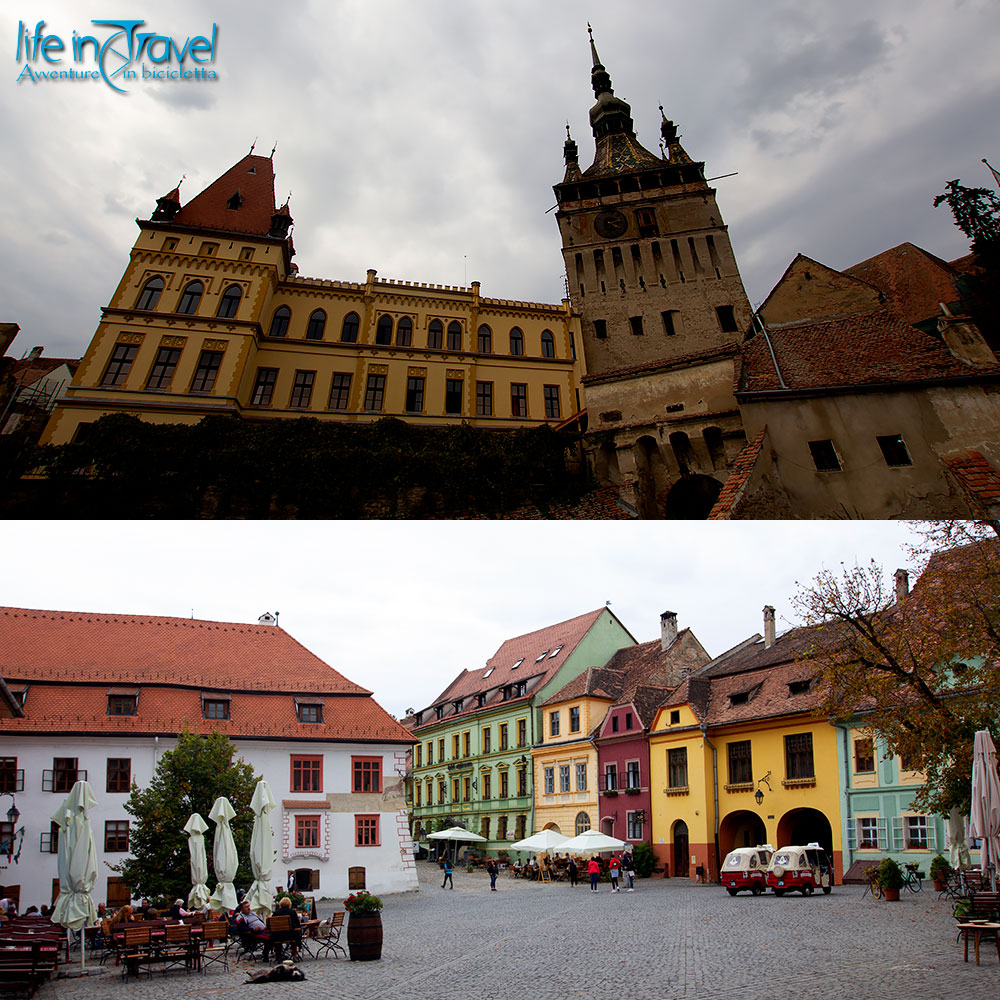
Coming back to Brasov
As I wrote before, we personally continued our #noplansjourney towards Eastern Carpathians to pass through Gheorgheni and up to Ukraine, but if you fancy closing this ring and come back to Brasov you can, by following the track which you can download from this page and which is taken from the Transylvania Epic Bike Ride itinerary.
 We don't have any first-hand information about this part of the itinerary, but this being a mountain bike race and having done the first part of the track, we can say that probably this is a bikepacking-friendly part of the itinerary, or at least for lighter bicycle tourers, while for people like us, heavy and bulky, it might be too much. The alternative is to follow the DN13, but we are against it because it might be too busy!
We don't have any first-hand information about this part of the itinerary, but this being a mountain bike race and having done the first part of the track, we can say that probably this is a bikepacking-friendly part of the itinerary, or at least for lighter bicycle tourers, while for people like us, heavy and bulky, it might be too much. The alternative is to follow the DN13, but we are against it because it might be too busy!
Discovering Transylvania by bicycle is a medium demanding trip, for length and elevation gain, but for sure this area od Romania will surprise and enchant you with its hospitality and beauty, believe us!

